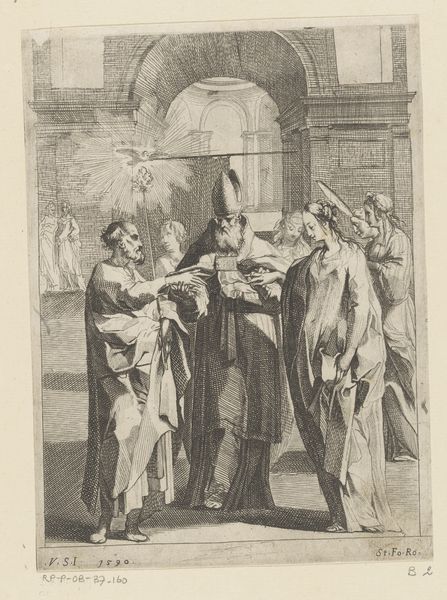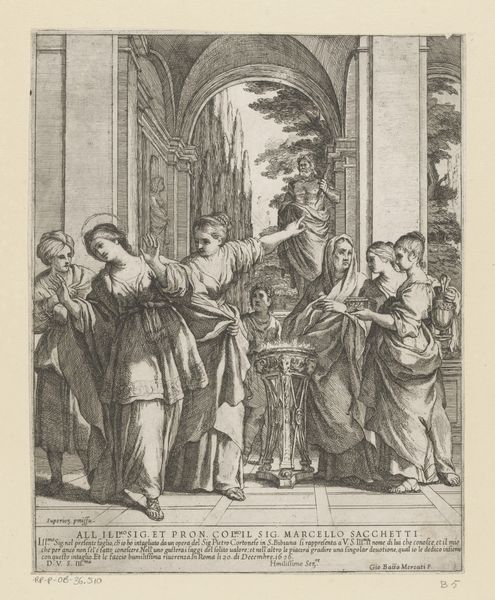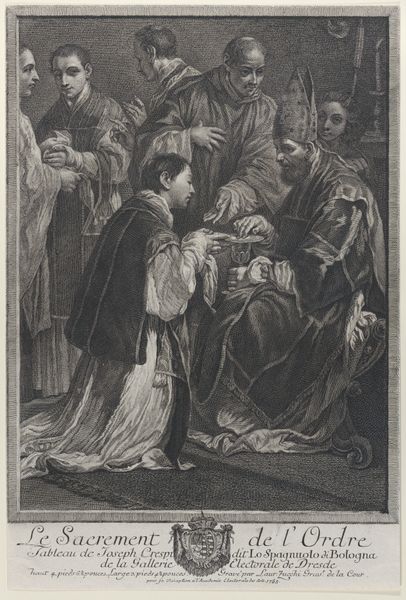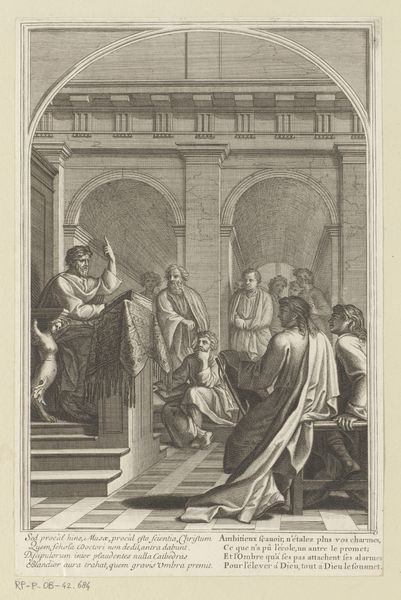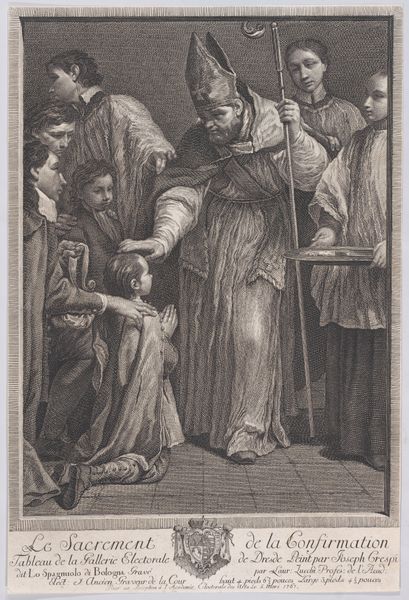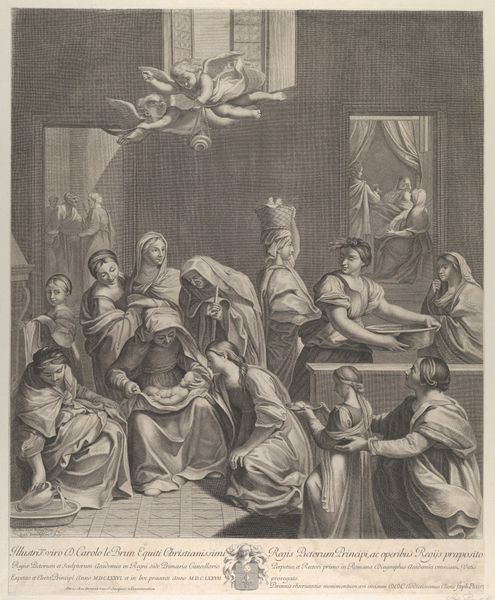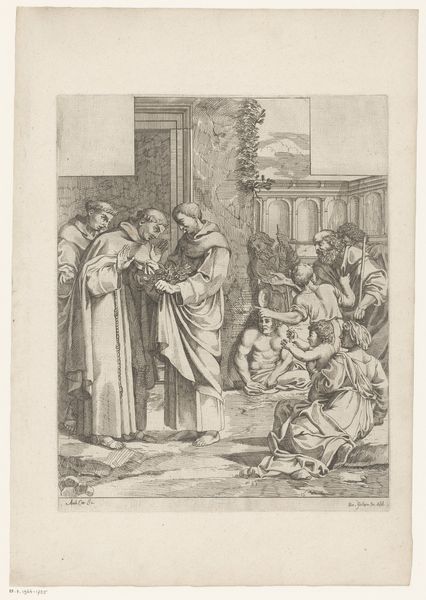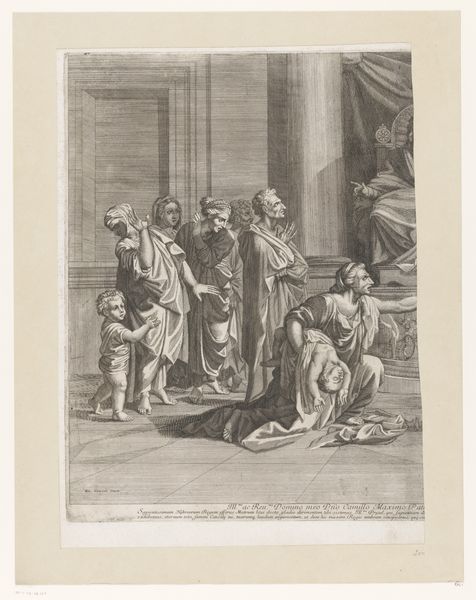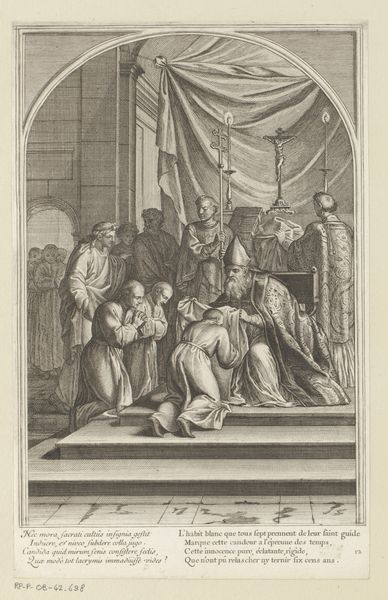
print, engraving
#
baroque
# print
#
figuration
#
line
#
history-painting
#
engraving
Dimensions: width 209 mm, height 147 mm
Copyright: Rijks Museum: Open Domain
This print of the Marriage of Mary and Joseph, from an unknown hand, was made using the intaglio process of etching. The etcher covers a copper plate with a waxy ground, then draws through it with a sharp needle, exposing the metal. The plate is then submerged in acid, which bites into the exposed lines. The resulting image is a network of fine furrows, ready to be inked, wiped, and printed. Notice how the varying density of lines creates a sense of depth and shadow, especially in the voluminous robes. Etching allowed for relatively quick reproduction, making images accessible to a wider audience. The work's social significance lies in its democratizing effect, bringing religious scenes into everyday life, far beyond the walls of a church. This print underscores how so-called 'minor arts' play a major role in shaping cultural understanding, blurring the line between the sacred and the secular.
Comments
No comments
Be the first to comment and join the conversation on the ultimate creative platform.
